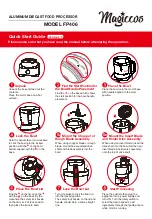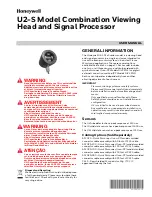
PRODUCT BRIEF INTRODUCTION
[ 1 ]
PRODUCT BRIEF INTRODUCTION
[ 2 ]
1.PRODUCT DESCRIPTION-PRECAUTIONARY NOTES
The DSP is a digital signal processor essential to maximize the acoustic performance of your car audio system.
It consists of a 32-bit DSP processor and 24-bit AD and DA converters.
It can connect to any factory system,even in vehicles featuring featuring an intergrated audio processor,since,thanks to the.
De-equalization function,the DSP will send back a linear signal.
It features selectable High and low level inputs as well as 3.5MM Aux and digital inputs that feed 8 completely variable output
channels. Each output channel has a 31-band equalizer available.it also features a 66-freqency electronic crossover as well as .
BUTTERWORTH or LINKWITZ filters with 6-24dB slopes and a digital time delay line.the user canselect adjustments.
That allow him or her to interact with the DSP through a remote control device called DRC.
WARNING:
1-a PC provided with Windows XP,Windows Vista or Windows 7 operating system,1.5GHz minimum.
Processor speed ,1 GB RAM minimum memory and a graphics card with a minimum resolution.
Of 1024x600 pixels are required to install the software and setup the DSP.
2-Before connecting you DSP, carefully read this manua .Improper connections may cause damage to
The DSP or to the speakers in the car audio system.
2.PACKAGING CONTENTS
- DSP- Signal Interface Processor
- Power supply cable Inputs/speaker output
- 5.0m USB cable
- 4 of 4.0*15 mm/8of 3.0*6mm self-tapping,
Cross-head fixing screws,
OPTIONAL:
- DRC(Digital Remote Control)control panel:
- 5.0 m DRC-AC Link cable
- Control High Level /wifi Input
INDEX
1. PRODUCT DESCRIPTION-PRECAUTIONARY NOTES............................02
2. PACKAGING CONTENTS........................................................................02
3. DSP AND DRC INSTALLATION...............................................................03
4
. INPUT SIGNALS
............................................................................................04
5. GUI OPERATION INSTRUCTION........................................................05-06
6.
INTERFACE INTRODUCTION
..................................................................
07-10
7. REMOTE INTRODUCTION......................................................................10
8. TECHNICAL FEATURES.........................................................................11

























